25 Wild Animals in Scotland [Wildlife in Scotland]
Want to know more about the wildlife in Scotland?
Discover 25 wild animals in Scotland in this post, as well as interesting facts about them. 🏴
Learn All About Scottish Animals
Ready to learn all about Scottish animals?
I’ve always been fascinated by animals and by how they can be so different from one country to another. In this guide, we’ll focus on the many animals Scotland has on the land, in the sky, and underwater.
I’ve split the guide into 5 categories:
- Native animals from Scotland
- Endangered animals of Scotland
- What is the national animal of Scotland?
- How many animals native to Scotland?
- What is Scotland’s most common wild animal?
Let’s dive in right away with our first category!
Native Animals from Scotland
Scotland is a European country located in the northwestern part of the continent, within the United Kingdom. It covers the northern third of Great Britain, is the second-largest country in the United Kingdom and makes up about 8.3 percent of its population, and used to be a sovereign, independent state from the 9th century until 1707. It is bordered by England, and although its largest city is Glasgow, its capital is Edinburgh, which counts more than 506,000 inhabitants (but more than 901,000 if you include the metropolitan area).
An interesting part of the country that I wanted to tackle is its wildlife. In light of that, I have listed the best of it, and I hope you will love learning what animals live in Scotland.
Here’s the Scotland animals list.
1. Gray seal
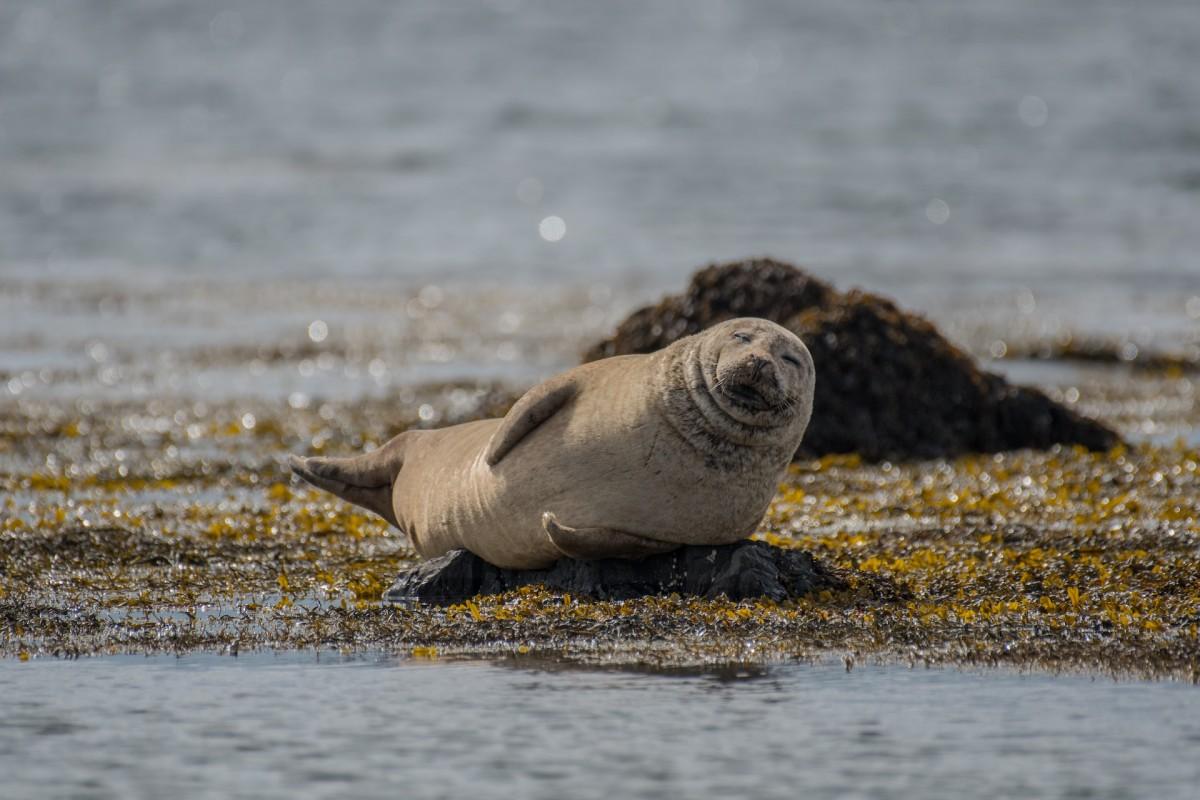
- Name: Gray seal
- Scientific name: Halichoerus grypus
- Conservation status:
The gray seal, also known as the horsehead seal or the Atlantic seal, is a large species of seal found on both shores of the North Atlantic Ocean. Scotland is known for its large gray seal population.
This seal can in fact be found all around the United Kingdom, breeding in large colonies on the coasts. It is vulnerable to predators such as sharks and, in the waters of Great Britain, killer whales.
2. Orca
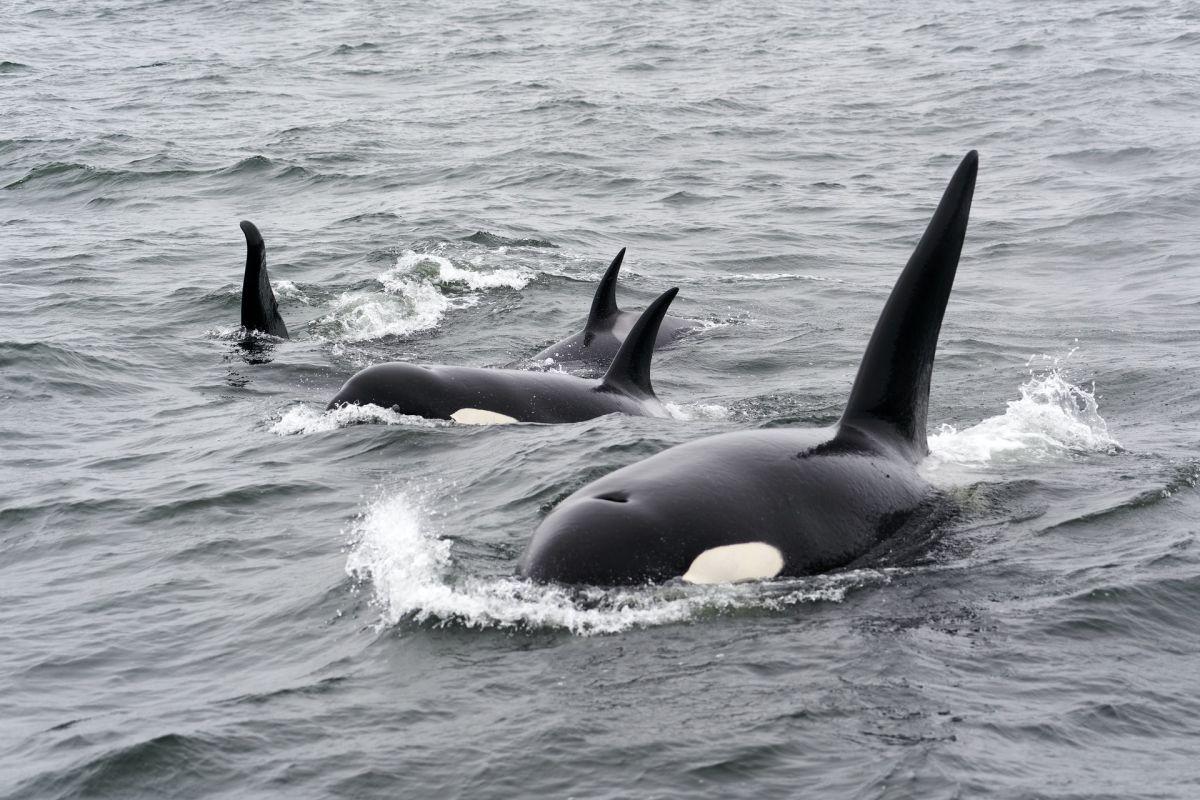
- Name: Orca
- Scientific name: Orcinus orca
- Conservation status:
The orca, widely known as the killer whale, is a large-toothed predator with a poorly understood distribution; in fact, it can be found in all of the world’s oceans, from Arctic seas to tropical waters, but its numbers are not quite clear.
This powerful apex predator is known to be one of the strongest carnivores in the world. It is also particularly smart, showing signs of intelligence while hunting with unique techniques.
3. Bottlenose dolphin
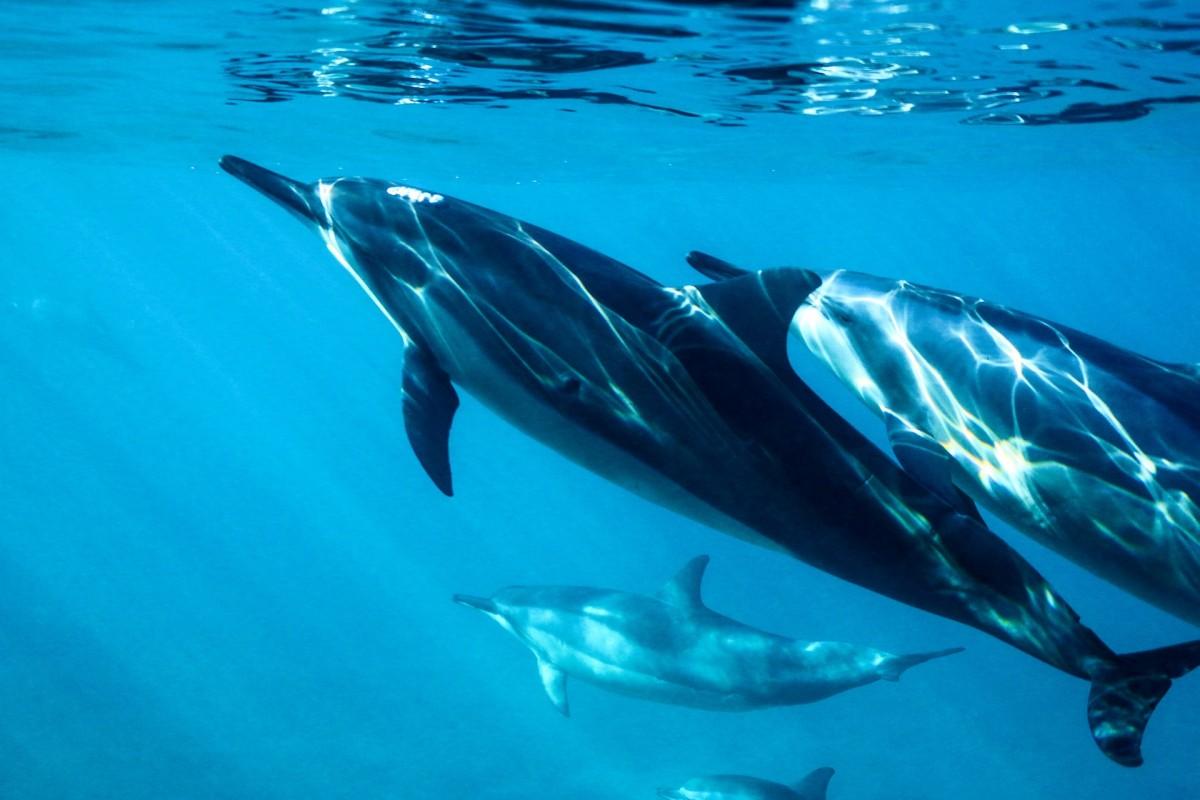
- Name: Bottlenose dolphin
- Scientific name: Delphinus truncatus
- Conservation status:
The bottlenose dolphin is one of the most common species of dolphin, and it can be found almost anywhere around the globe, from cold, temperate to warm, tropical waters, except for the Arctic and Antarctic regions.
Scotland is home to the most northerly colony of bottlenose dolphins in the world. There, they are known to sometimes behave incredibly aggressively, practicing infanticide and, believe it or not, attacking and killing harbor porpoises!
4. Black grouse
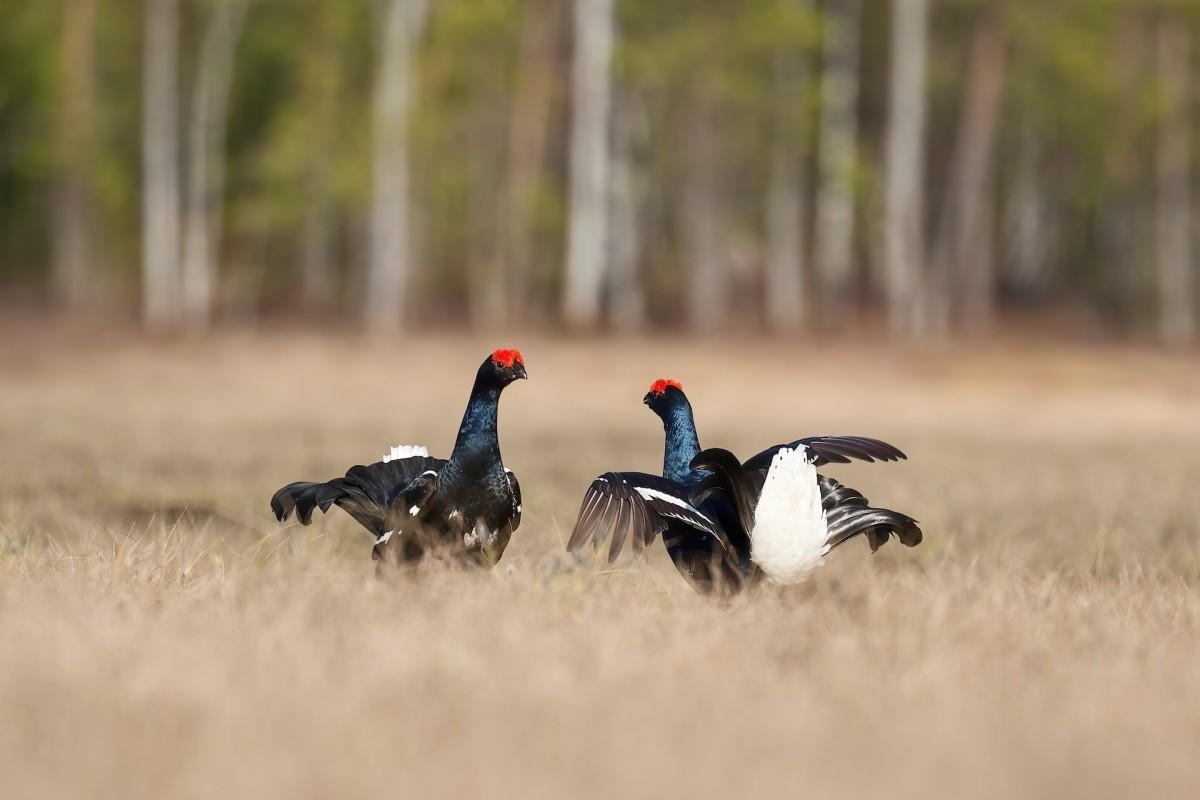
- Name: Black grouse
- Scientific name: Lyrurus tetrix
- Conservation status:
The black grouse, also known as the blackcock, the Eurasian black grouse, or the blackgame, is a large species of game bird found in the steppes and moorlands of much of Eurasia, and it is particularly common in Scotland, where it lives near wooded areas.
This bird spends the winter perched in dense forests, feeding on the needles of conifers. Ever since late Victorian times, the tails of black grouse have been popular on hats worn with Highland Dress, the traditional Scottish clothes.
5. Harbor porpoise
- Name: Harbor porpoise
- Scientific name: Phocoena phocoena
- Conservation status:
The harbor porpoise is one of eight species of porpoise in the world, as well as one of the smallest cetaceans. As its name suggests, it can mostly be found around coastal waters and river estuaries and is thus the most popular porpoise to whale watchers.
This species suffers from malnutrition along the east coast of Scotland due to climate change, which affects and reduces stocks of sand eel, an important food source.
6. Golden eagle

- Name: Golden eagle
- Scientific name: Aquila chrysaetos
- Conservation status:
The golden eagle is one of Scotland’s national icons. It is the most widely distributed species of eagle in the world and has long been used in falconry due to its graceful flight and incredible strength.
This eagle particularly loves Scotland’s rugged and mountainous habitat, as well as its wet, windy maritime climate. Although it usually isn’t a scavenger, it will often soar in order to find carrion during the winter.
7. Scottish crossbill
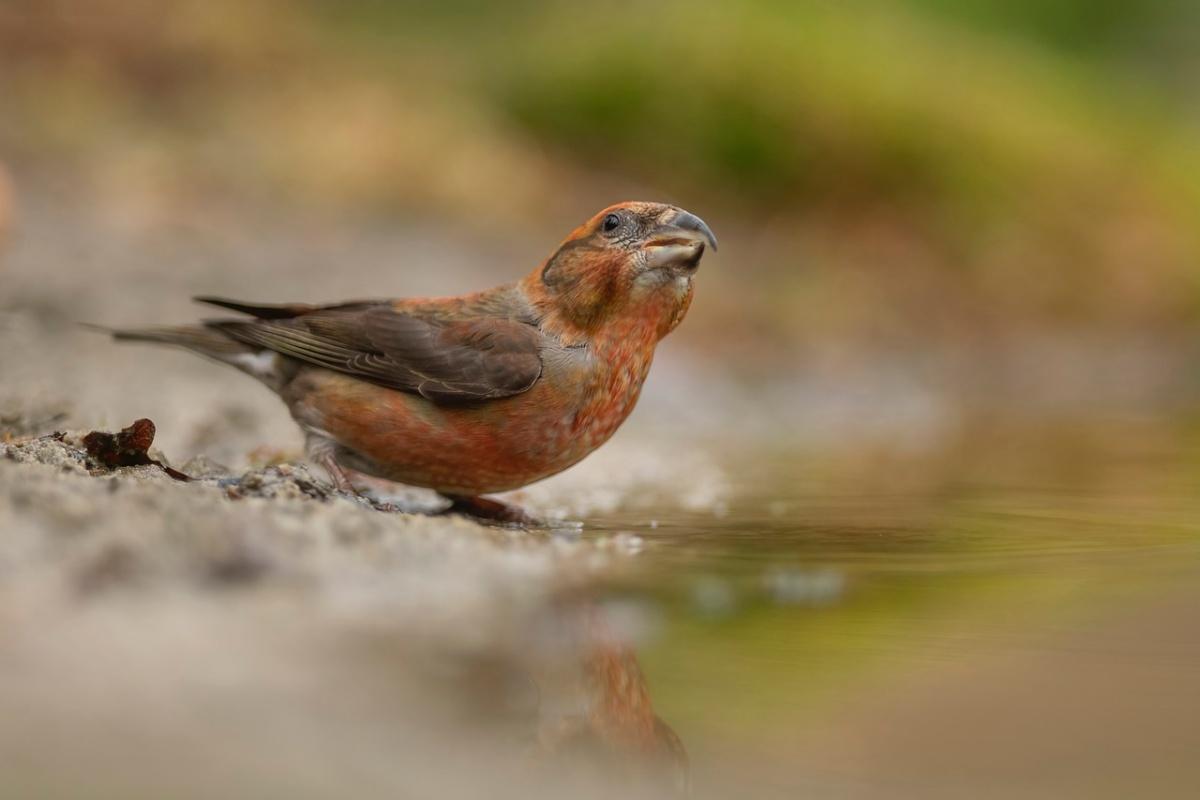
- Name: Scottish crossbill
- Scientific name: Loxia scotica
- Conservation status:
The Scottish crossbill is a small species of passerine bird endemic to the Caledonian Forests of Scotland. In fact, it is the only terrestrial vertebrate endemic to the entire United Kingdom!
Despite being classified as least concern, the populations of Scottish crossbills are globally declining, and some of them are on the brink of extinction. Nevertheless, this bird should be heavily protected if anything serious happened to it, being considered of international importance.
8. Atlantic salmon
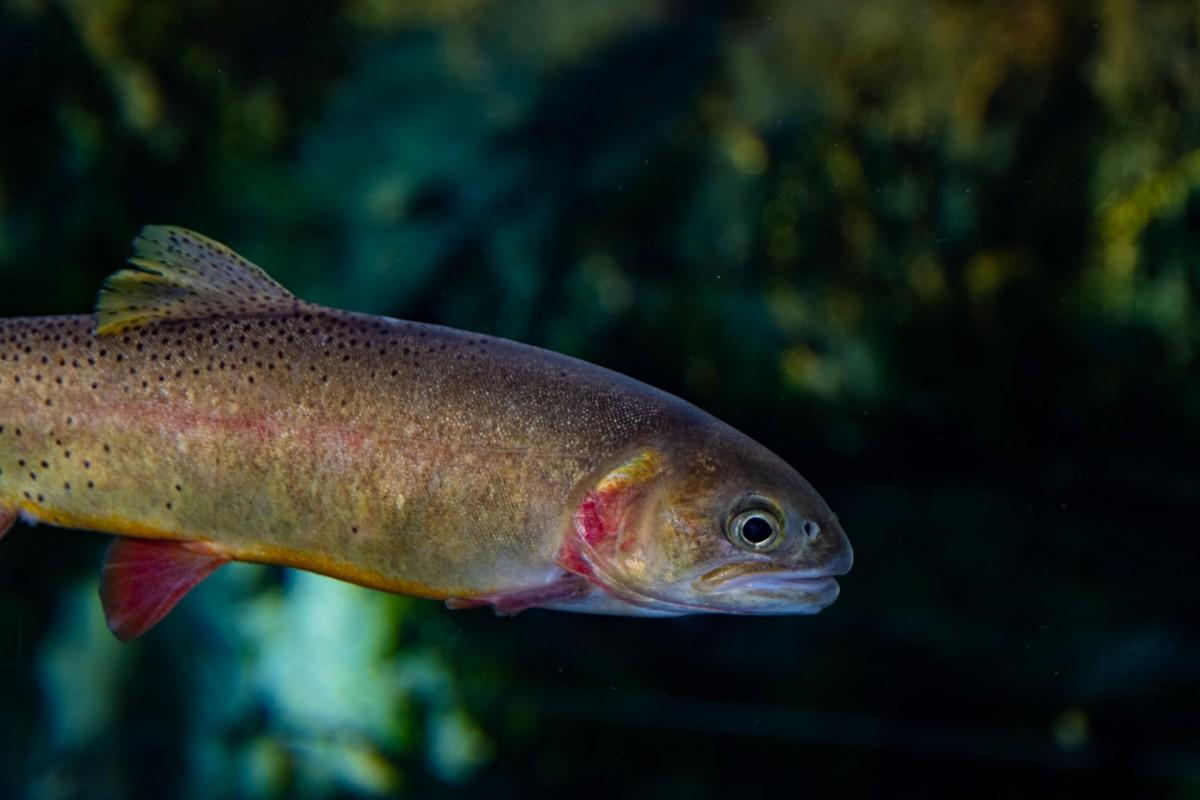
- Name: Atlantic salmon
- Scientific name: Salmo salar
- Conservation status:
The Atlantic salmon is the third largest species of salmon in the world, growing up to 1 m / 3.3 ft in length! It can be found throughout much of the northern Atlantic Ocean, as well as in inland Scottish waters, where almost 400 different populations live.
This salmon hatches in rivers and streams, but moves out to sea when growing, after which it seasonally goes back to rivers during the breeding season.
9. Scottish wildcat
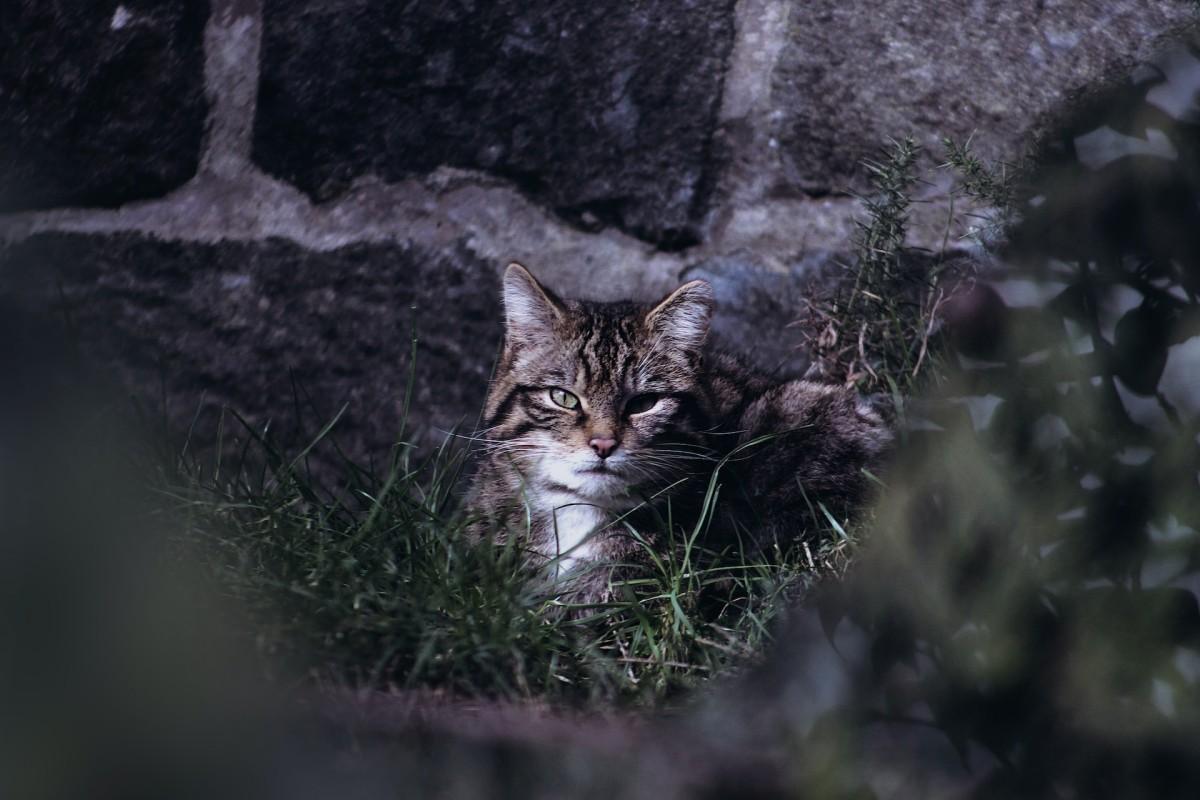
- Name: Scottish wildcat
- Scientific name: Felis silvestris silvestris
- Conservation status:
The Scottish wildcat is a subpopulation of the European wildcat, a small species of wildcat native to mainland Europe, Turkey, the Caucasus, and Scotland. It lives in forests and has gray fur with a ringed, black-tipped tail. Depending on areas and human disturbance, it is either active by day or at night, although largely nocturnal.
There are somewhere between 1,000 and 4,000 Scottish wildcats left, and the country has developed a “Scottish Wildcat Conservation Action Group” in order to protect it.
10. Orkney vole
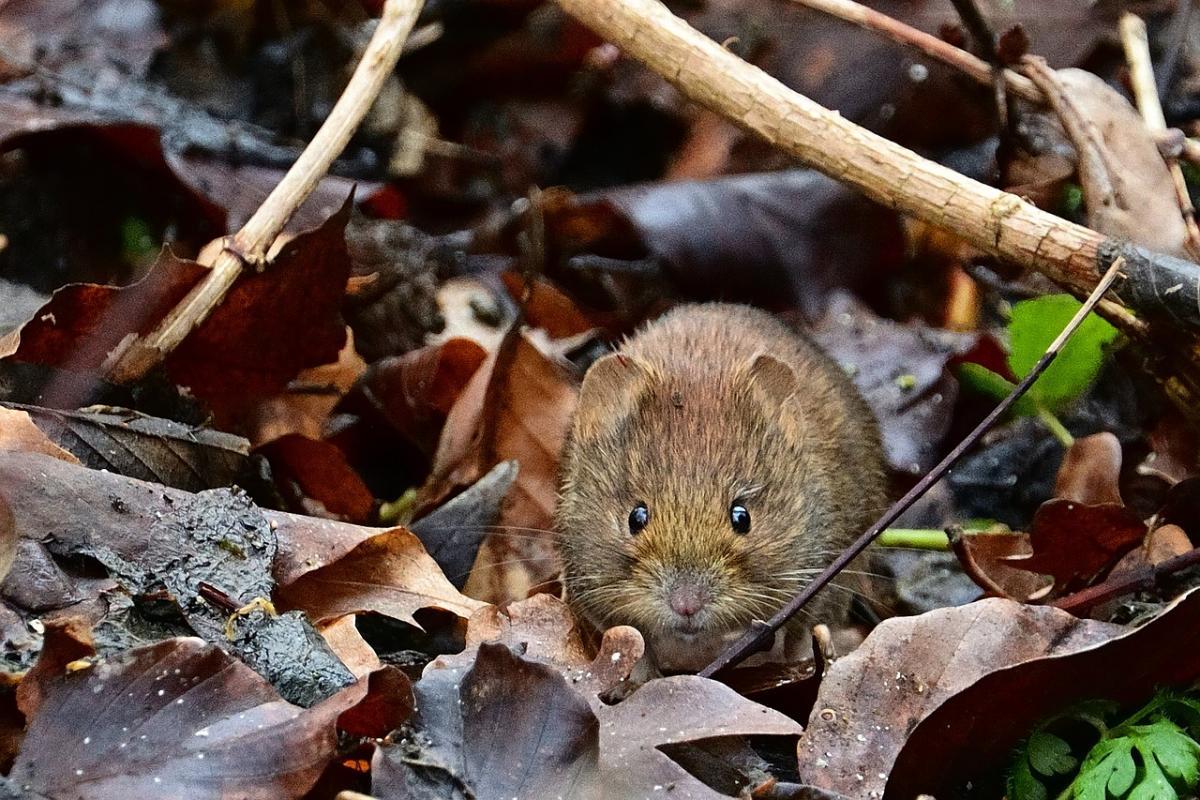
- Name: Orkney vole
- Scientific name: Microtus arvalis orcadensis
- Conservation status:
The Orkney vole is a subpopulation of the common vole endemic to the Orkney Islands, a Scottish archipelago. It is about 10 percent larger than the common vole on average and can be found in 8 islands of the archipelago, including the Mainland, the largest one and Scotland’s 6th-largest island.
The reason for this vole to be only found there could be the disappearance of the land bridge that once connected mainland Scotland and Orkney.
11. American mink
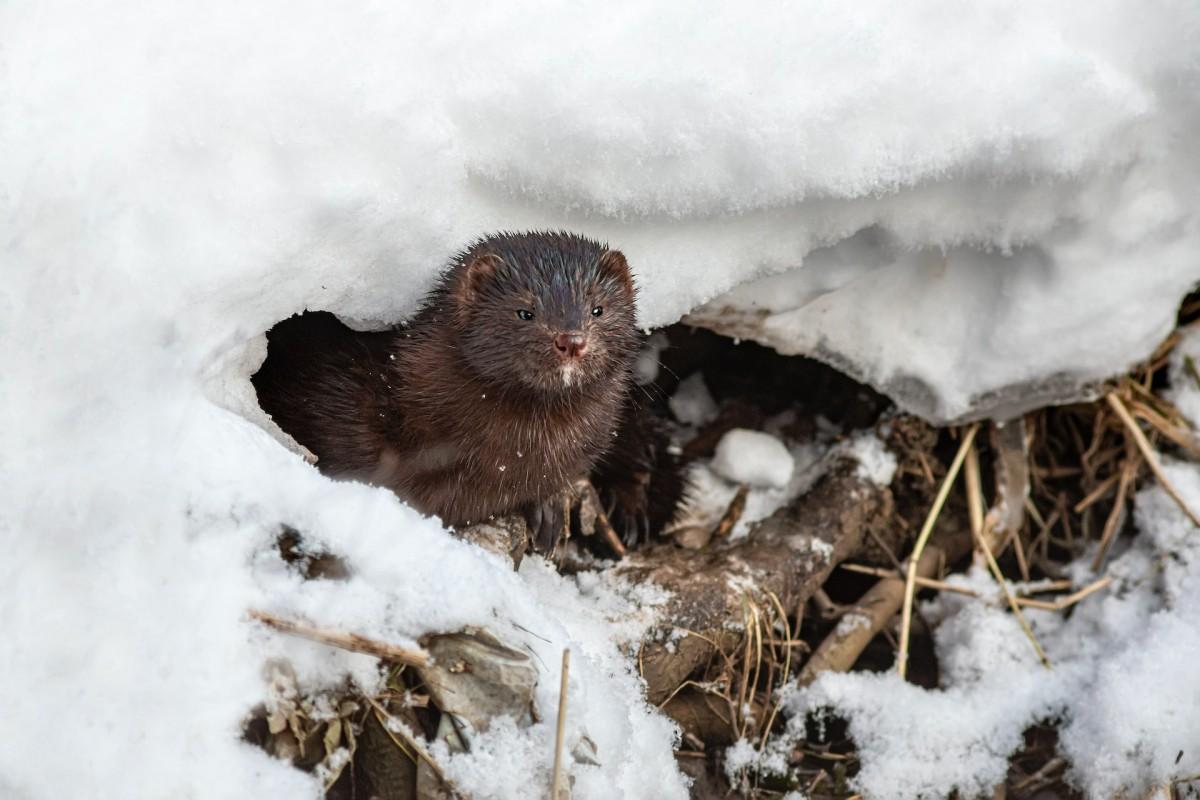
- Name: American mink
- Scientific name: Neogale vison
- Conservation status:
The American mink is a semi-aquatic species of mustelid native to North America and introduced to many parts of Europe, South America, and Asia, where it is often considered an invasive species and a nuisance.
This mink arrived in Scotland from Britain throughout the 1950s, with the initial purpose of building fur farms; since then, it has spread throughout the entire country and is now being exterminated.
12. Red squirrel
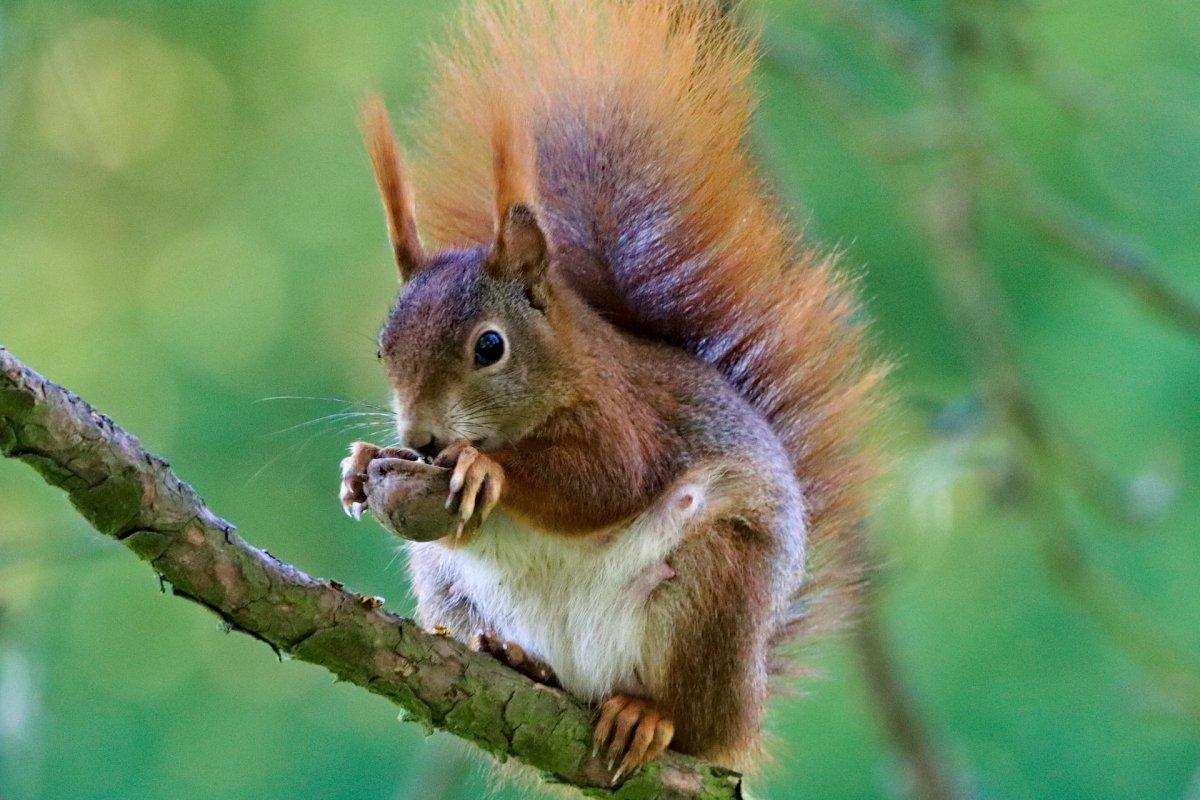
- Name: Red squirrel
- Scientific name: Sciurus vulgaris
- Conservation status:
The red squirrel is a very common and widespread species of tree squirrel found throughout Europe and Asia. However, its numbers have recently drastically declined due to the introduction of the North American eastern gray squirrel, an important competitor.
In Scotland, the red squirrel populations are stabilizing thanks to conservation efforts and awareness, as well as the increasing population of the pine marten which heavily preys on gray squirrels.
13. European pine marten
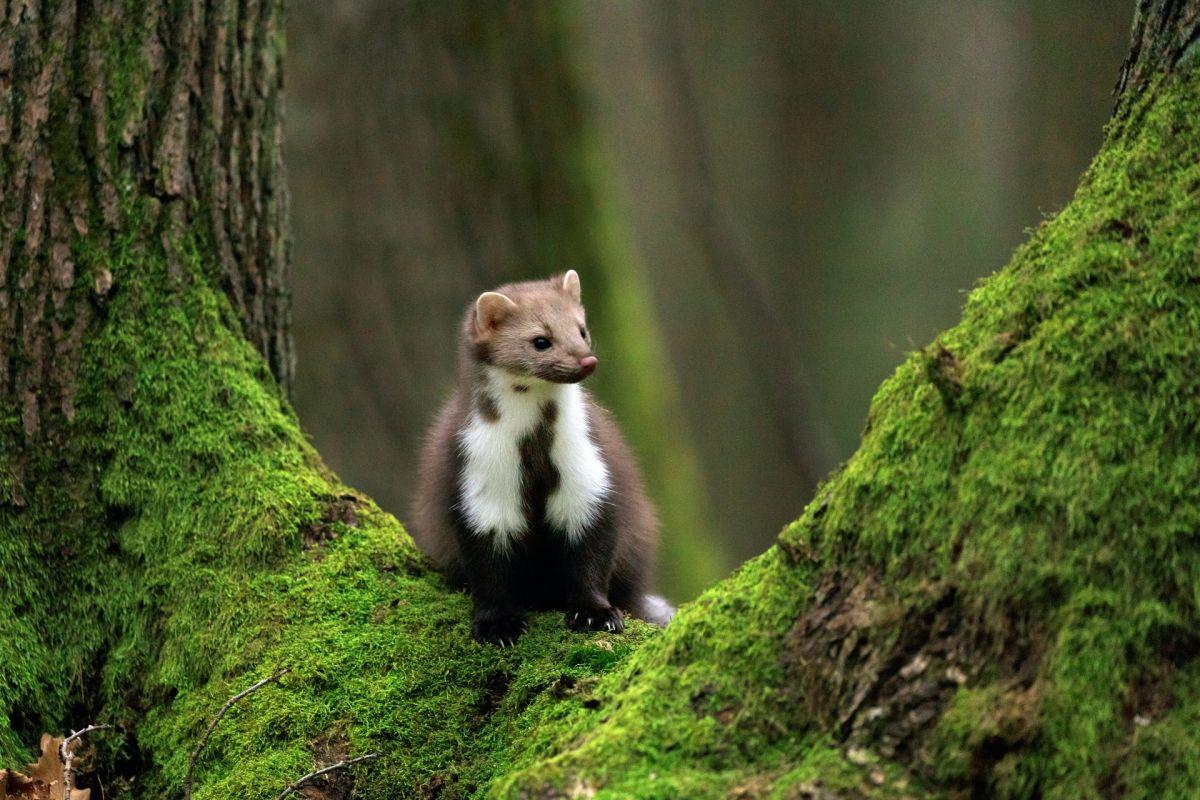
- Name: European pine marten
- Scientific name: Martes martes
- Conservation status:
The European pine marten, also known as the baum marten or the sweet marten, is a species of mustelid native to much of Europe, as well as parts of the Middle East. After being only common in northwestern Scotland in the entire United Kingdom, it is spreading more and more throughout the islands, and can now be found much more southerly.
This mustelid leads a much more arboreal style than others, being the only one with semi-retractable claws; this allows it to feed on eggs and arboreal species such as gray squirrels.
14. Scottish red deer
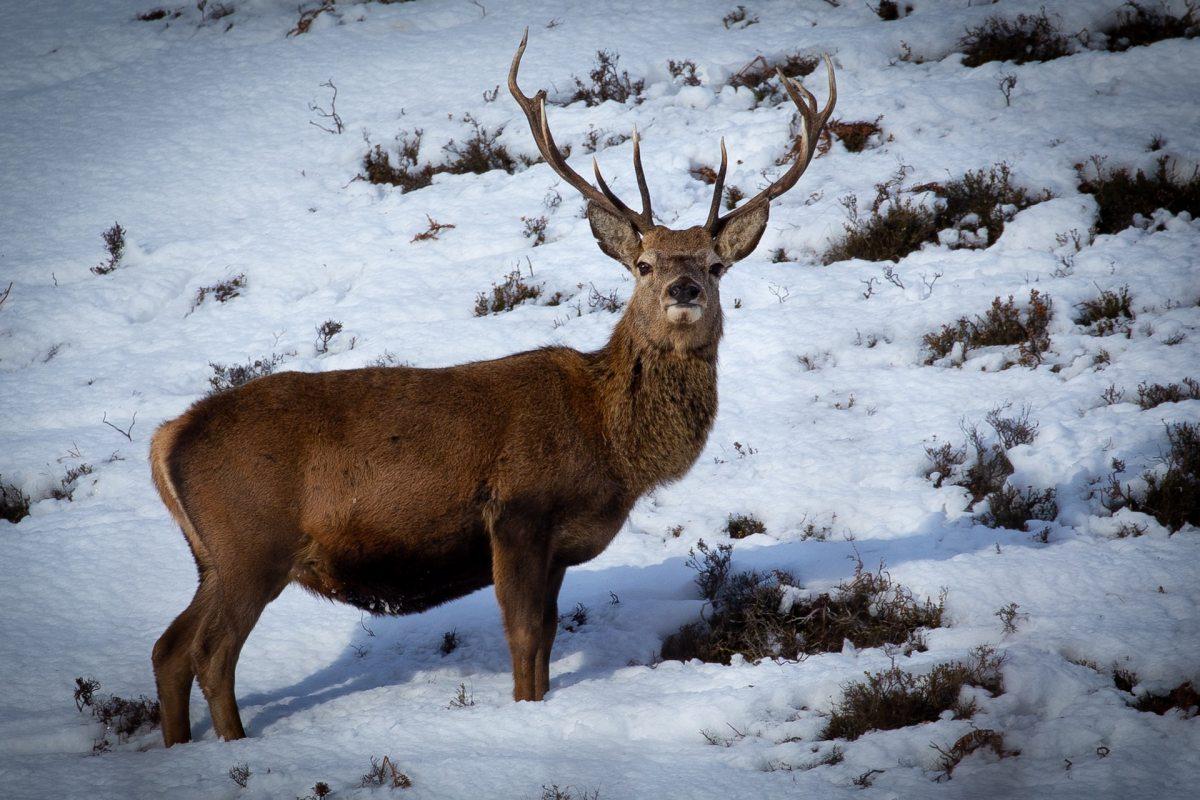
- Name: Scottish red deer
- Scientific name: Cervus elaphus scoticus
- Conservation status:
The Scottish red deer is a subspecies of the red deer native to Great Britain. It came from mainland Europe during the Stone Age and is now exclusively found on the island. It is extremely common in Scotland, and it is even farmed for its antlers, hides, and meat.
This deer can be found all around the Scottish Highlands and Islands, as well as in many parts of England.
15. Soprano pipistrelle
- Name: Soprano pipistrelle
- Scientific name: Pipistrellus pygmaeus
- Conservation status:
The soprano pipistrelle, also known as the brown pipistrelle, is a small species of bat found in parts of Europe, including the vast majority of Great Britain, except for its northernmost point. It roosts in large colonies in buildings, which causes problems in urban areas due to the smell.
This bat is also called the 55 kHz pipistrelle due to the frequency it uses for echolocation; it also gets its “soprano” name because of this, since common pipistrelles echolocate at only 45 kHz.
16. Soay sheep
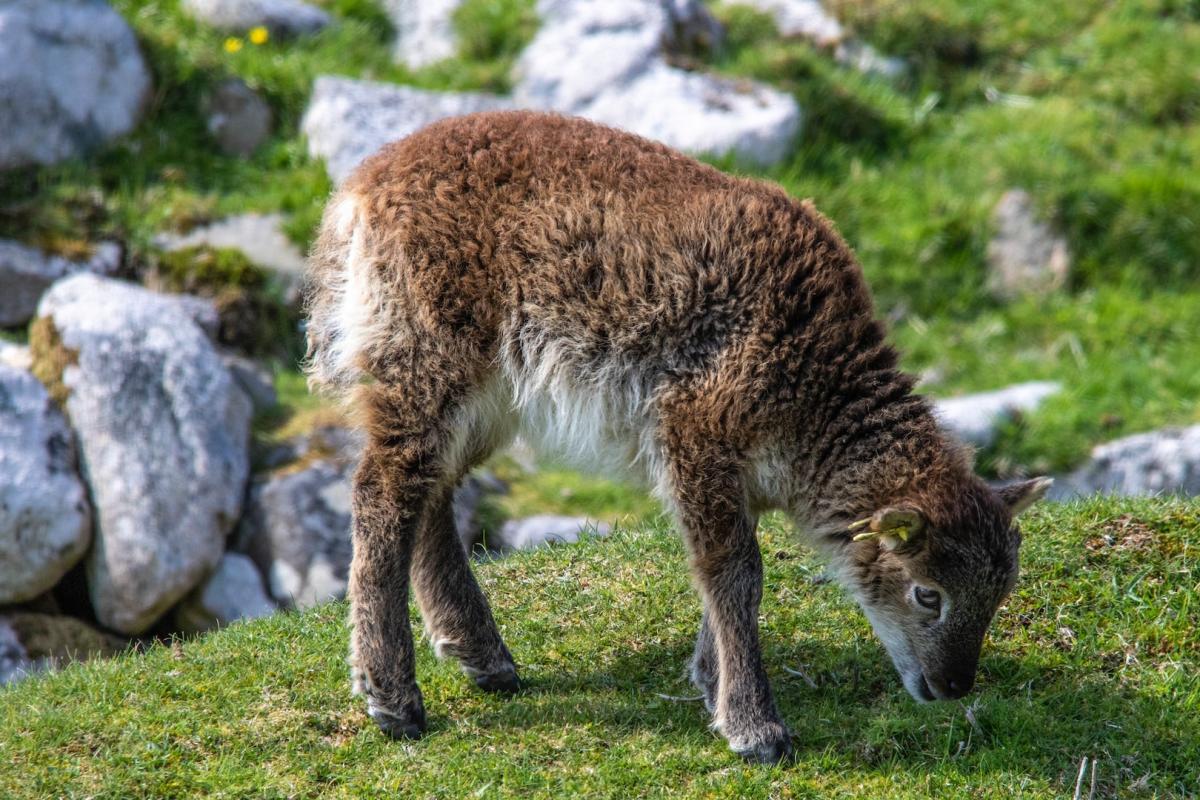
- Name: Soay sheep
- Scientific name: Ovis aries
- Conservation status:
The Soay sheep is a breed of domestic sheep found on the St Kilda Archipelago, off the western coast of Scotland. There are about 1,000 feral sheep on the archipelago, and although they are much smaller than most sheep, they are much hardier.
This mammal is particularly agile and takes refuge amongst the cliffs when threatened or frightened. It is either brown or black and is becoming smaller and smaller due to climate change.
17. Cuvier’s beaked whale
- Name: Cuvier’s beaked whale
- Scientific name: Ziphius cavirostris
- Conservation status:
Cuvier’s beaked whale, also known as the goose-beaked whale, is the most widely distributed species of beaked whale: it can be found in all of the world’s oceans, at almost any temperature except for the extreme northern and southern parts of the globe.
This whale is pretty difficult to observe, living in waters deeper than 300 m / 1,000 ft and often plunging at more than 2,000 m / 6,651 ft!
18. Eurasian beaver
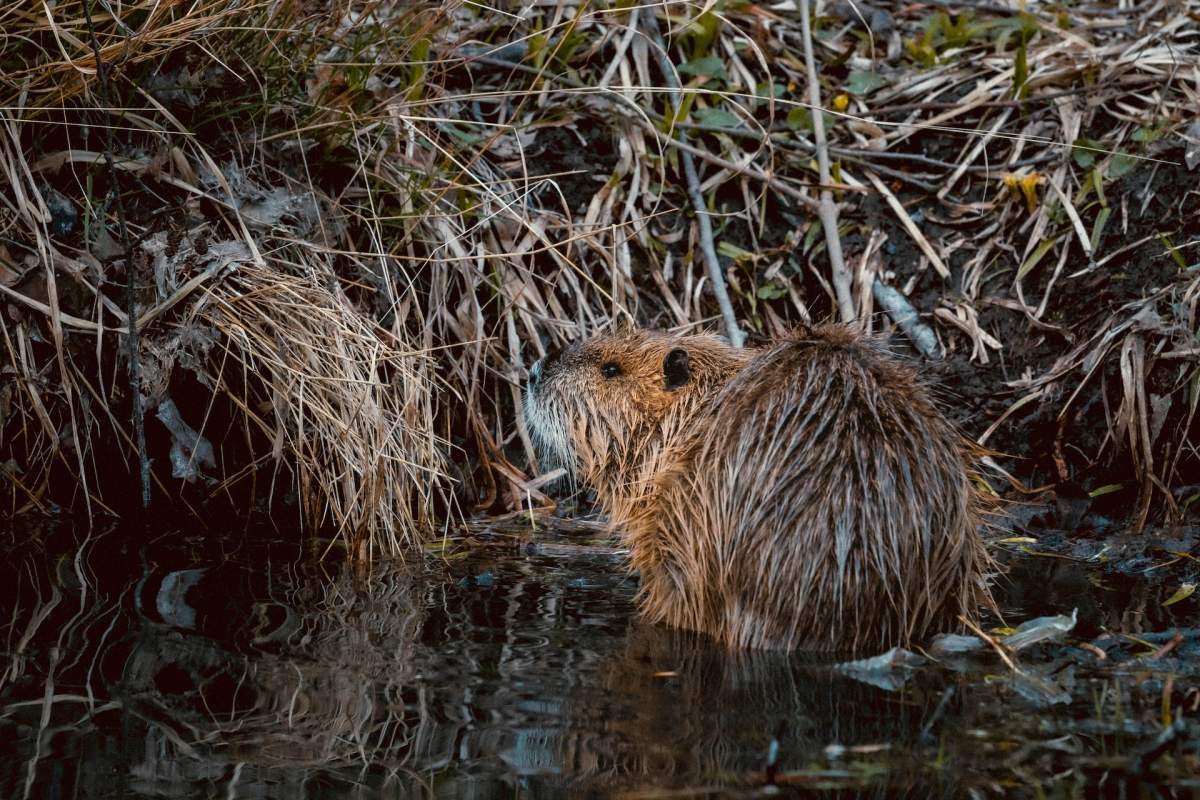
- Name: Eurasian beaver
- Scientific name: Castor fiber
- Conservation status:
The Eurasian beaver, also known as the European beaver, is a species of beaver found throughout Eurasia, although it used to be very close to extinction; it has since then been reintroduced to much of its former range.
In fact, in Scotland, this mammal was reintroduced after 400 long years of absence, thanks to a Norwegian stock. Since then, it has been given protected status, and will hopefully remain permanently in the country.
19. White-tailed eagle
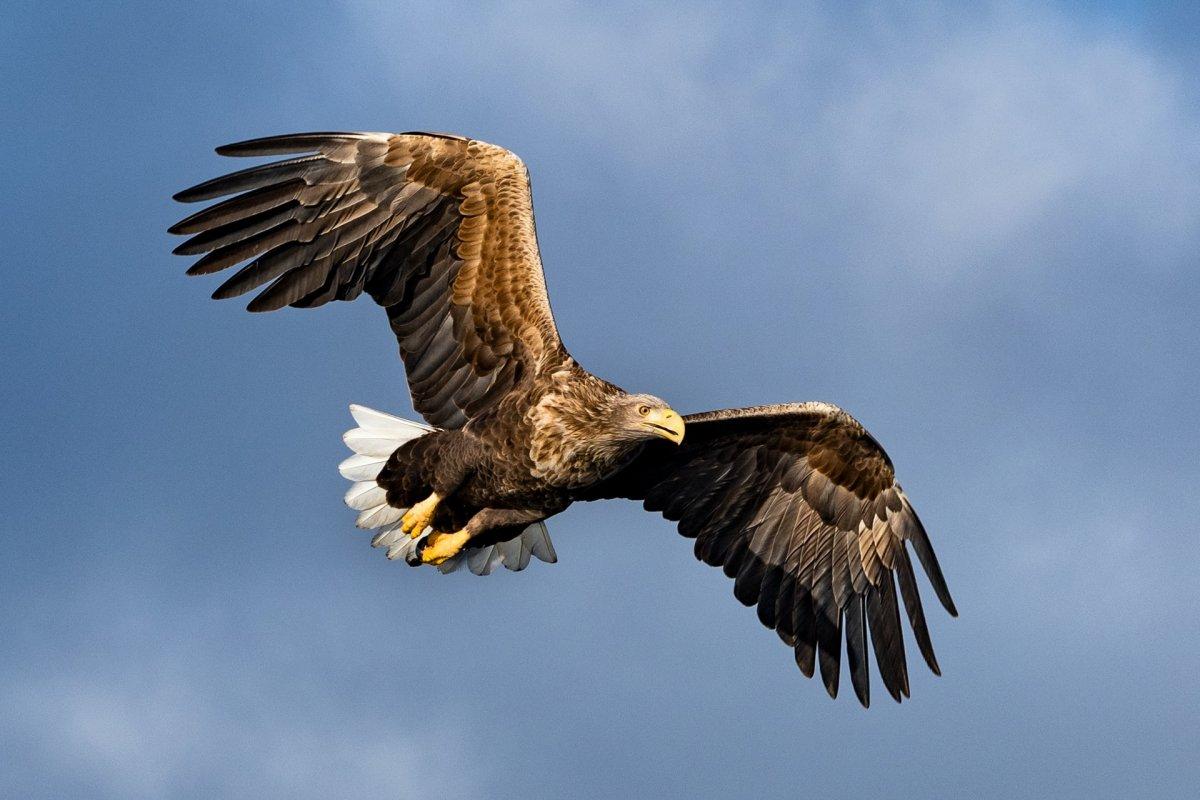
- Name: White-tailed eagle
- Scientific name: Haliaeetus albicilla
- Conservation status:
The white-tailed eagle, also known as the gray sea eagle, the Eurasian sea eagle, or the ern, is a very large species of sea eagle found throughout most of Eurasia. Similarly to the Eurasian beaver, it had become extinct in Scotland but was reintroduced 60 years after its disappearance.
Scotland is an important spot for the white-tailed eagle. Historically, it has been persecuted throughout all of Great Britain due to its tendency to prey on livestock and on fish.
20. Northern gannet
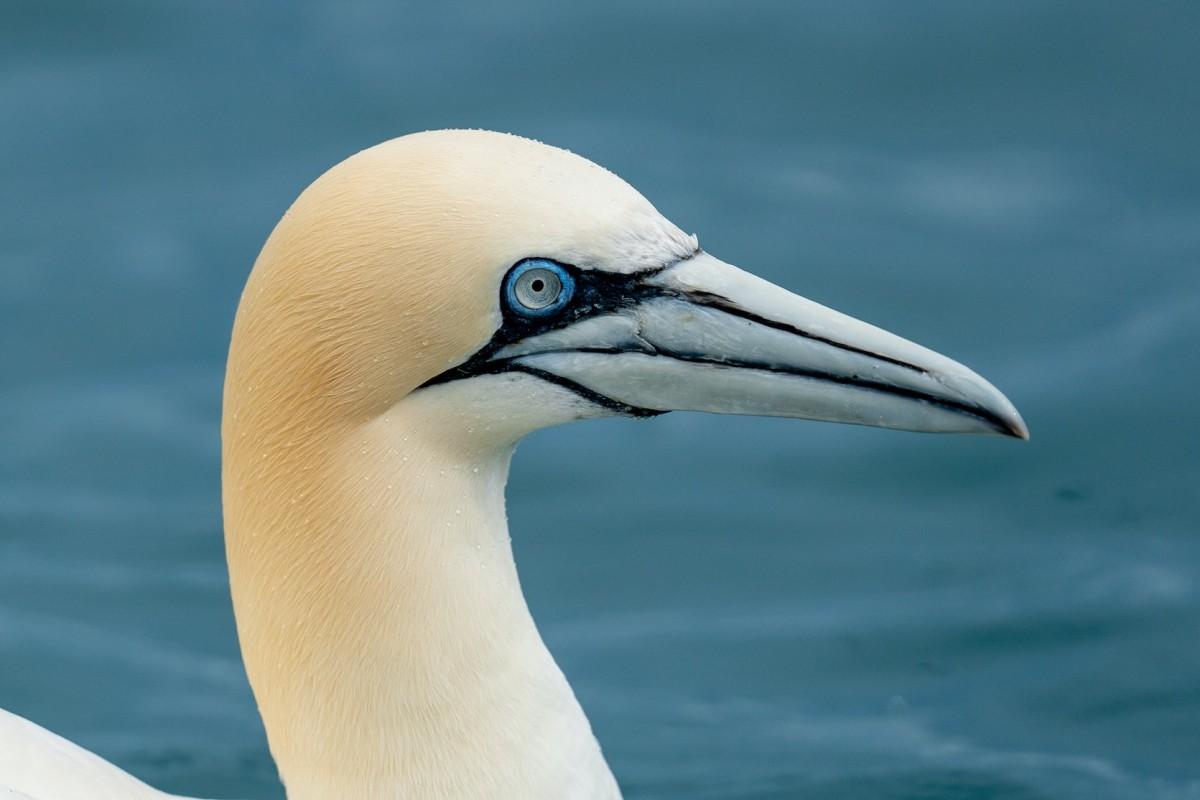
- Name: Northern gannet
- Scientific name: Morus bassanus
- Conservation status:
The northern gannet is the largest species of gannet in the world, a kind of seabird. It can be found on both shores of the North Atlantic Ocean, but about half of its worldwide population lives in Scotland.
The largest populations of northern gannets are found at Bass Rock (75,000 pairs), St Kilda (60,000 pairs), and Ailsa Craig (33,000 pairs), all in Scotland. Although sometimes hunted for food, this bird faces little to no threats, natural or man-made.
21. Manx shearwater
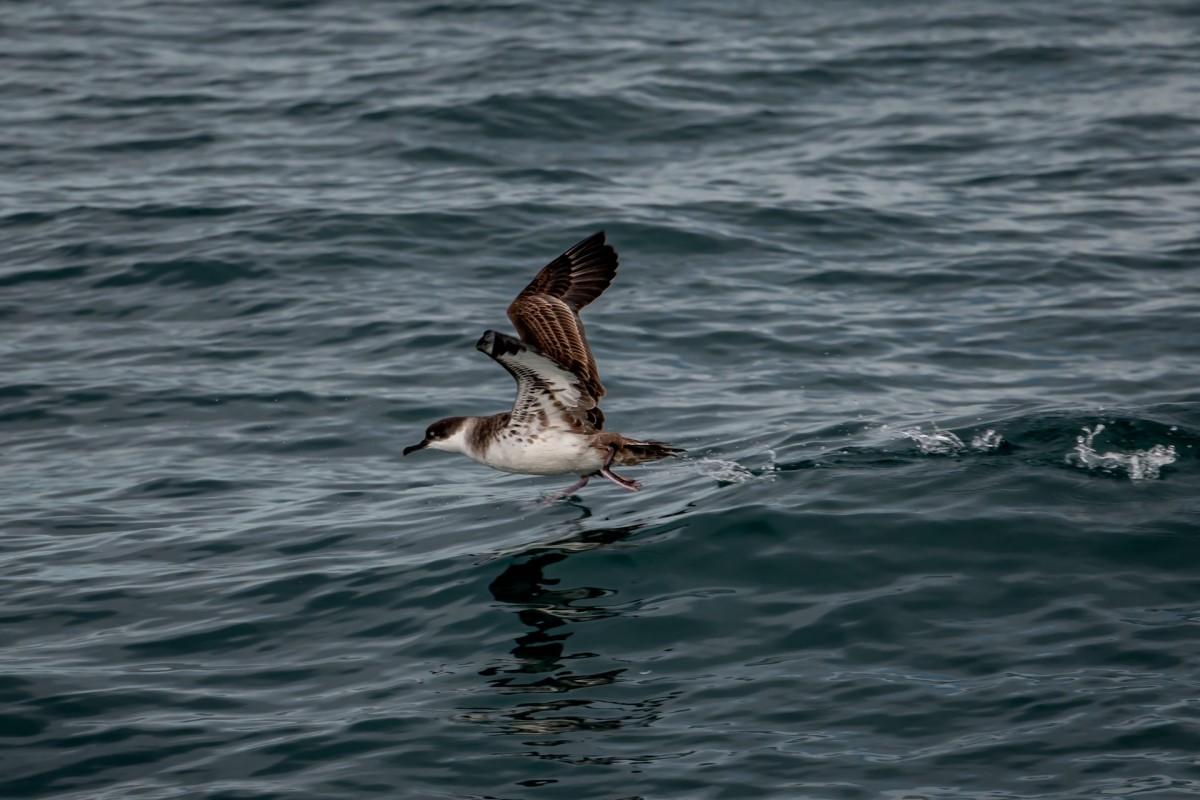
- Name: Manx shearwater
- Scientific name: Puffinus puffinus
- Conservation status:
The Manx shearwater is a medium-sized species of seabird found around the Atlantic, and about a third of its global population is found in Scotland. Despite living in large breeding colonies, it is pretty silent.
This seabird is entirely marine and flies within 10 m / 30 ft of the sea surface. It nests in burrows on small islands, which it only goes to at night. It can live for an unusually long time, sometimes reaching 55 years of age!
22. Hooded crow
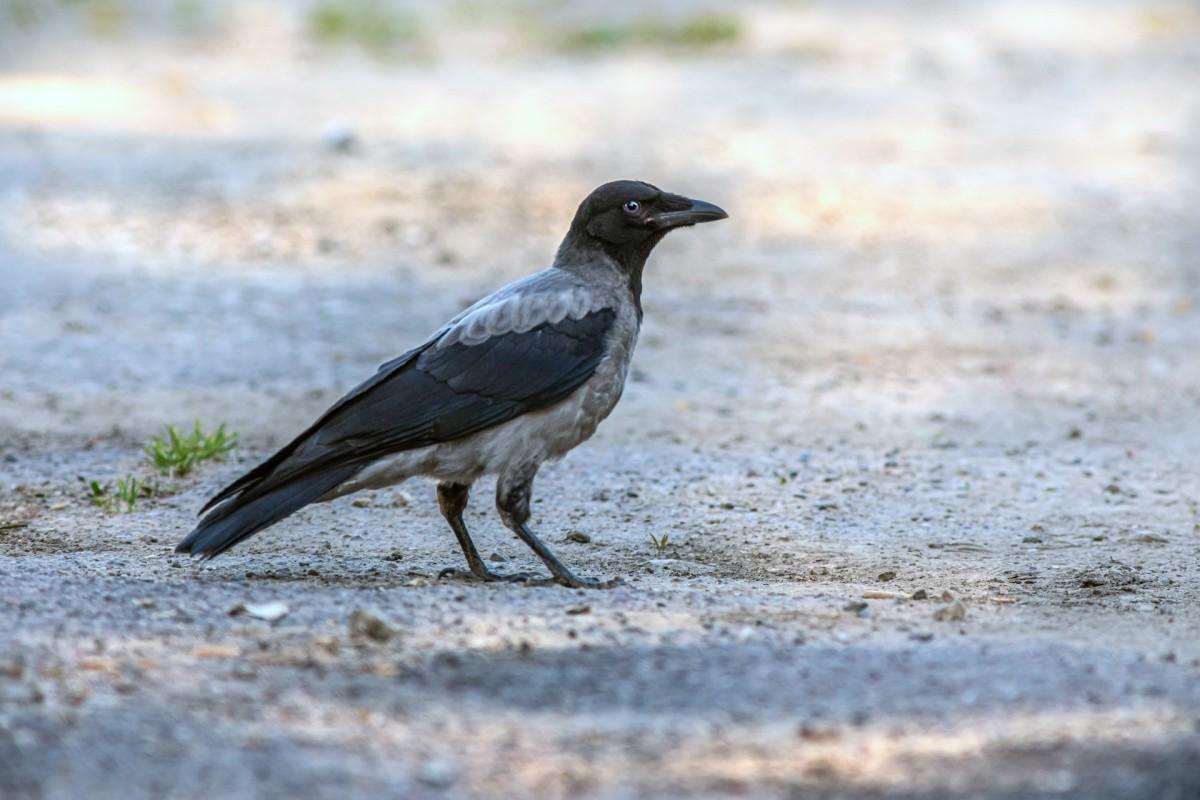
- Name: Hooded crow
- Scientific name: Corvus cornix
- Conservation status:
The hooded crow, also known as the hoodie or the scald-crow, is a species of crow with a wide distribution, being found in northern, eastern, and southeastern Europe, as well as areas of the Middle East. It is ashy gray and black and is both omnivorous and opportunistic.
This crow regularly breeds in mainland Scotland, as well as on many of its islands. In fall, some birds come to the east coast of Britain, but while it used to be a common visitor, the hooded crow has now become much rarer.
23. European eel
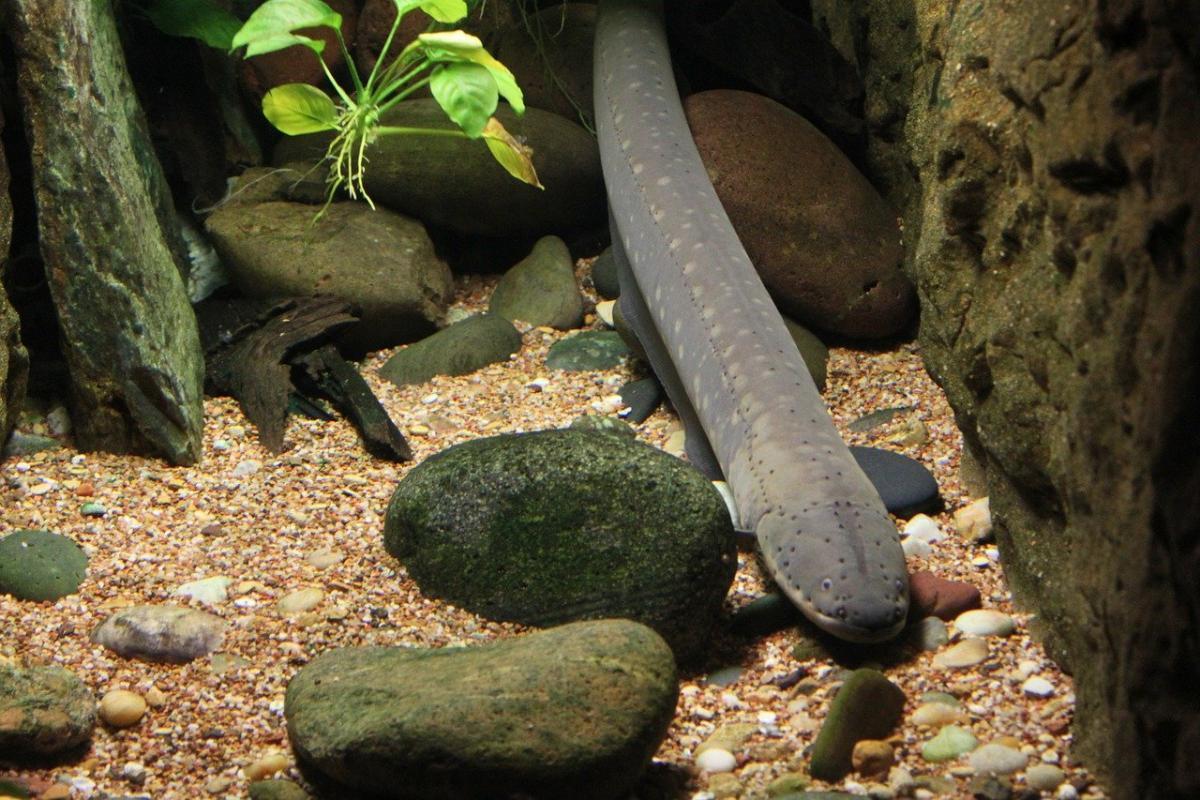
- Name: European eel
- Scientific name: Anguilla anguilla
- Conservation status:
The European eel is a critically endangered species of snake-like fish found around most of Europe. It is incredibly long-lived, averaging more than 80 years of age in captivity and reaching up to 155 years in a very unique case!
The numbers of this eel have declined by more than 90 percent (and maybe as much as 98 percent) since the 1970s, mostly due to parasites, overfishing, natural changes, and hydroelectric dams.
24. Freshwater pearl mussel
- Name: Freshwater pearl mussel
- Scientific name: Margaritifera margaritifera
- Conservation status:
The freshwater pearl mussel used to be a very common species of mussel, abundant enough to support commercial activities. Now, it is seriously endangered, as its populations have drastically declined in recent years.
Scotland is the main stronghold for this mollusk, as about half its global population is located around the country. It can be found in about 50 rivers of the country, mainly in the Highlands, but is still seriously endangered by illegal harvesting.
25. Atlantic puffin
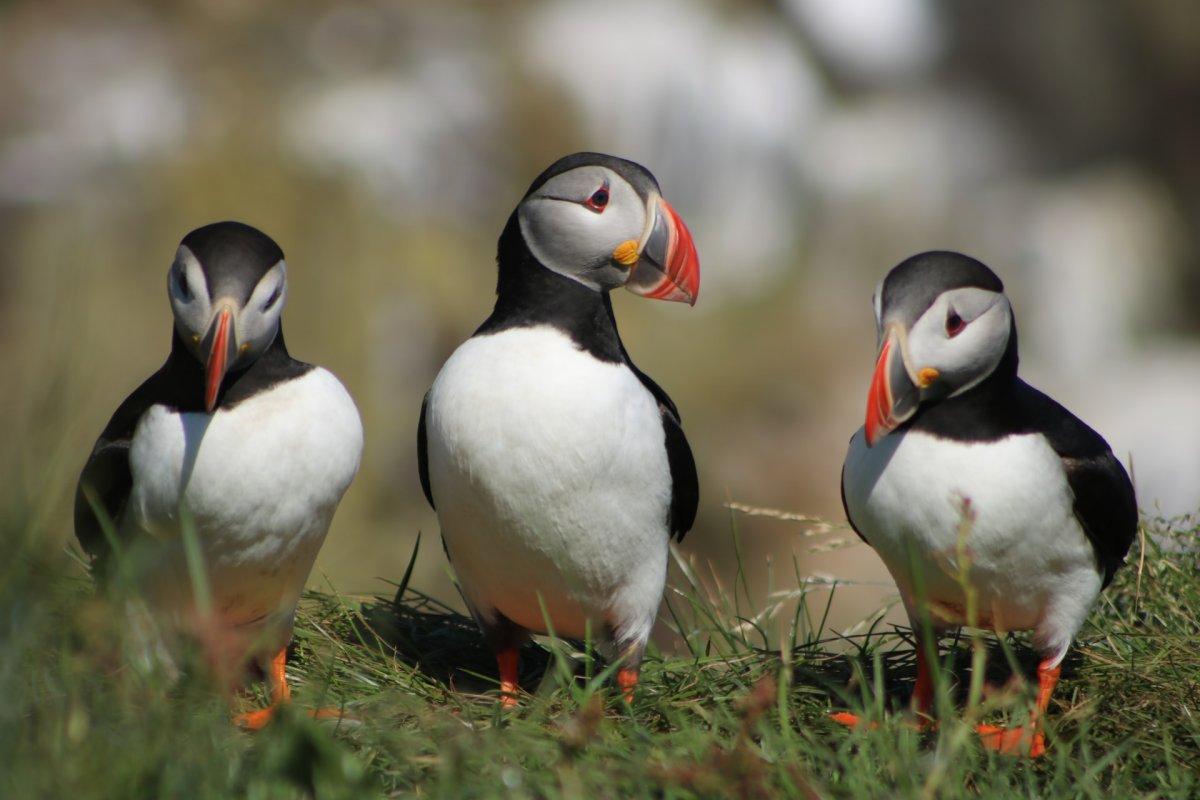
- Name: Atlantic puffin
- Scientific name: Fratercula arctica
- Conservation status:
The Atlantic puffin, also known as the common puffin, is a species of seabird found in the northern Atlantic Ocean. It is the only puffin native to the Atlantic Ocean, and while it breeds in very northerly regions, it migrates southwards onto Scotland during the winter.
The conservation of the Atlantic puffin in Scotland is a very serious challenge. One of its largest colonies used to be found on the island of Craigleith, with about 28,000, but it has now decreased to only a few thousand to the invasion of the tree mallow, which prevents birds from finding suitable habitats for burrowing and breeding.
—
So there you have them, these were my 25 Scottish wild animals. I hope you enjoyed this list and that you learned something new today.
In case you want to learn more about Scotland wildlife, feel free to keep reading, as I still have lots of things to tell you about:
Endangered Animals of Scotland
This is definitely the saddest part of the list, but it is very important to raise awareness. Because of this, let’s go through the list of endangered animals in Scotland.
Here are the animals in danger of extinction in Scotland (including the rest of the United Kingdom as well).
- Houting
- Great auk
- Sociable lapwing
- Kemp’s ridley sea turtle
- Atlantic sturgeon
- North Atlantic right whale
- Balearic shearwater
- and 13 more…
- Shortfin mako
- Undulate skate
- Angular roughshark
- European rabbit
- Blue whale
- and 15 more…
To see the full list of endangered species in Scotland, head over to the International Union for Conservation of Nature’s Red List.
What is the National Animal of Scotland?
The national animal of Scotland is the unicorn.
Yes, believe it or not, Scotland chose a mythical animal to best symbolize it! The reason for that dates back centuries ago, as the unicorn has been featured in lots of different cultures, said to be able to purify poisoned water and to heal almost anything.
In stories, this creature is proud, untameable, and completely independent, making it very difficult to capture… just like Scotland!
How Many Animals Native to Scotland?
What is the diversity of native animals in Scotland?
Let’s look at the total number of species of Chordata (mammals, birds, fishes, and reptiles).
Total number of animal species in Scotland: 1,269 (3,149 in total in Europe)
What is Scotland’s most common wild animal?
The most common wild animal in Scotland is definitely the red deer. In fact, this animal is abundant throughout much of Europe, in which it has been a pretty important symbol for centuries, being hunted for its antlers and meat and featuring in many cultures, especially Germanic ones.
The majority of red deer in Scotland can be found in the Scottish Highlands; there are about 300,000 individuals in the country alone!
More About Animals in the World!
Loved these Scotland animal facts? Want to see what animals live in other countries?
Then check out these posts:
- Wild Animals in the United Kingdom
- Wild Animals in Northern Ireland
- Wild Animals in England
- Wild Animals in Wales
Or click here to see ALL the facts up on the blog! Spoiler alert: there’s A LOT of them.
Share the knowledge! Click on the buttons below to share information on the wildlife of Scotland with your friends, and help them learn more about the world 🙂
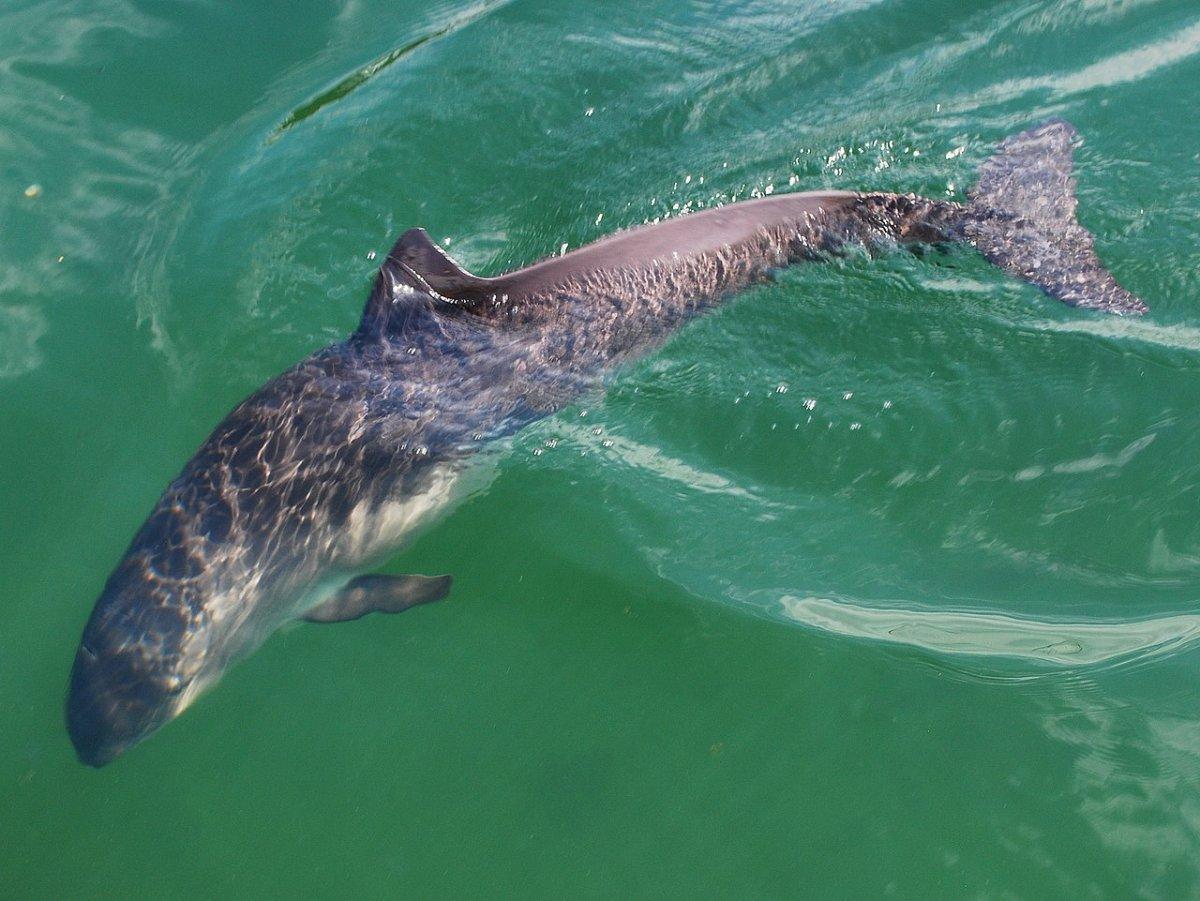
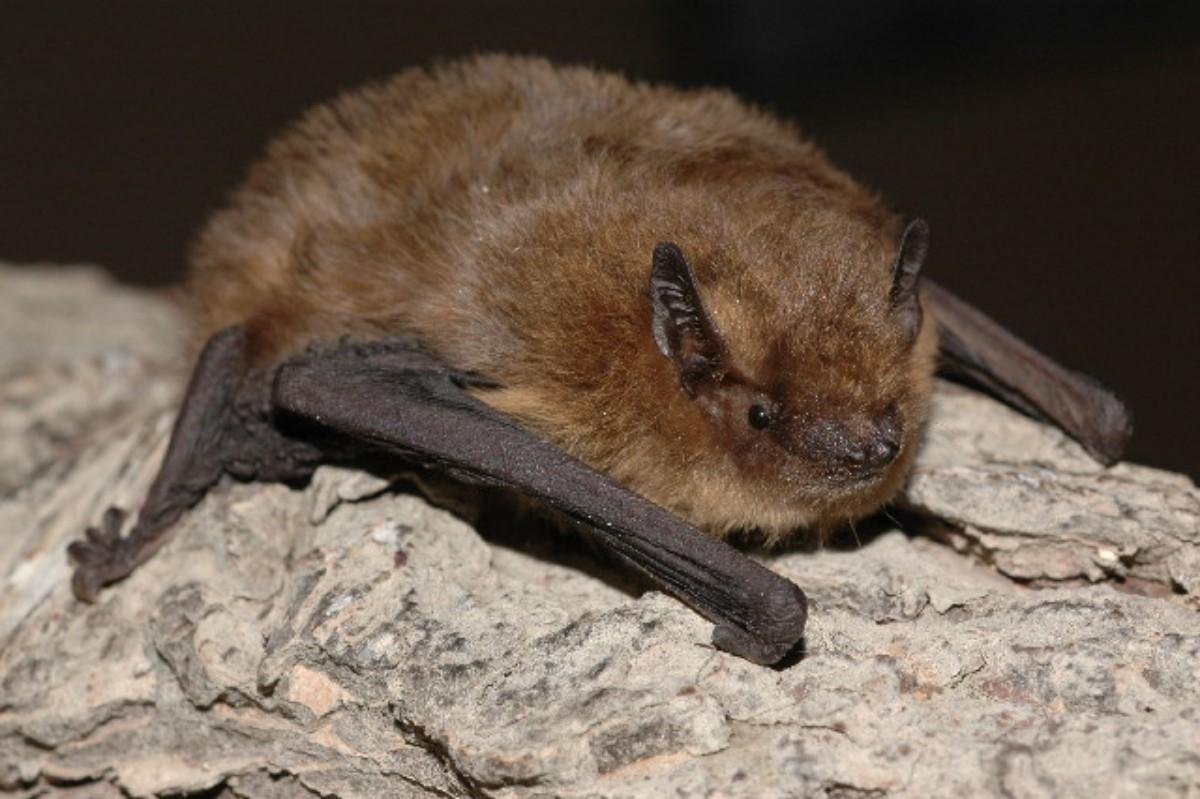
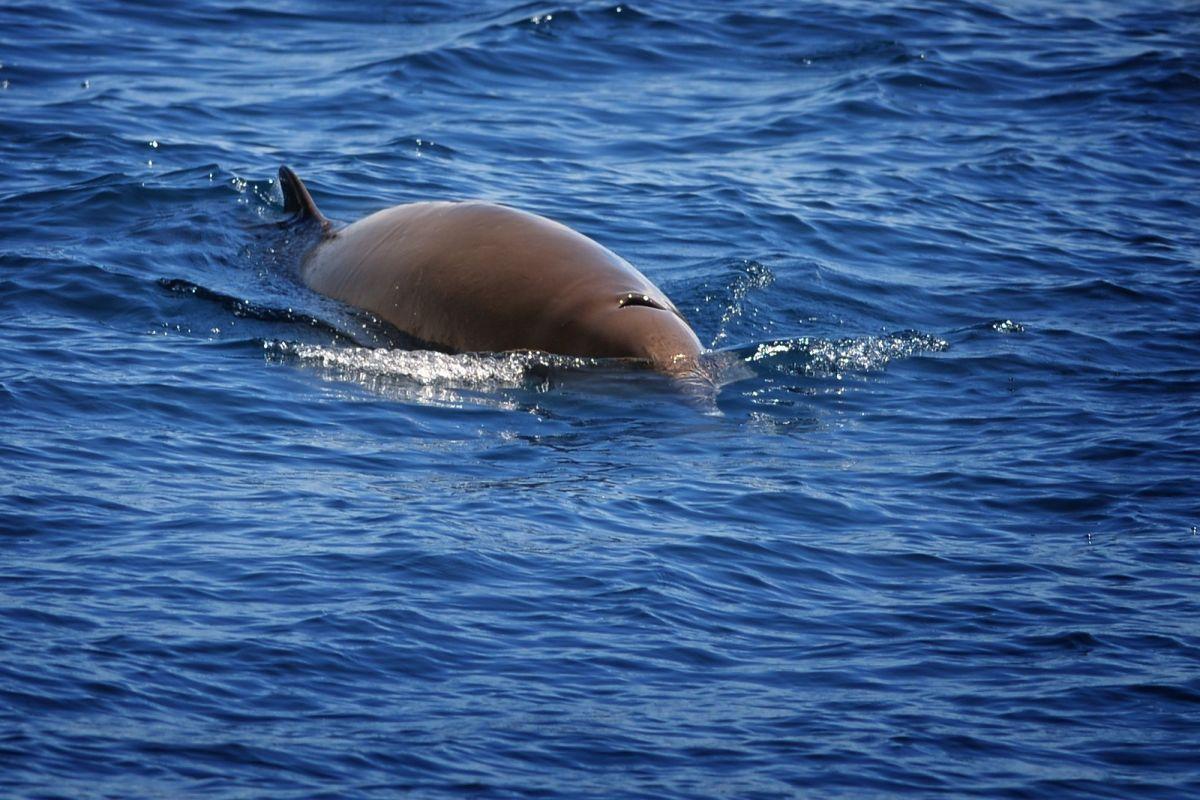
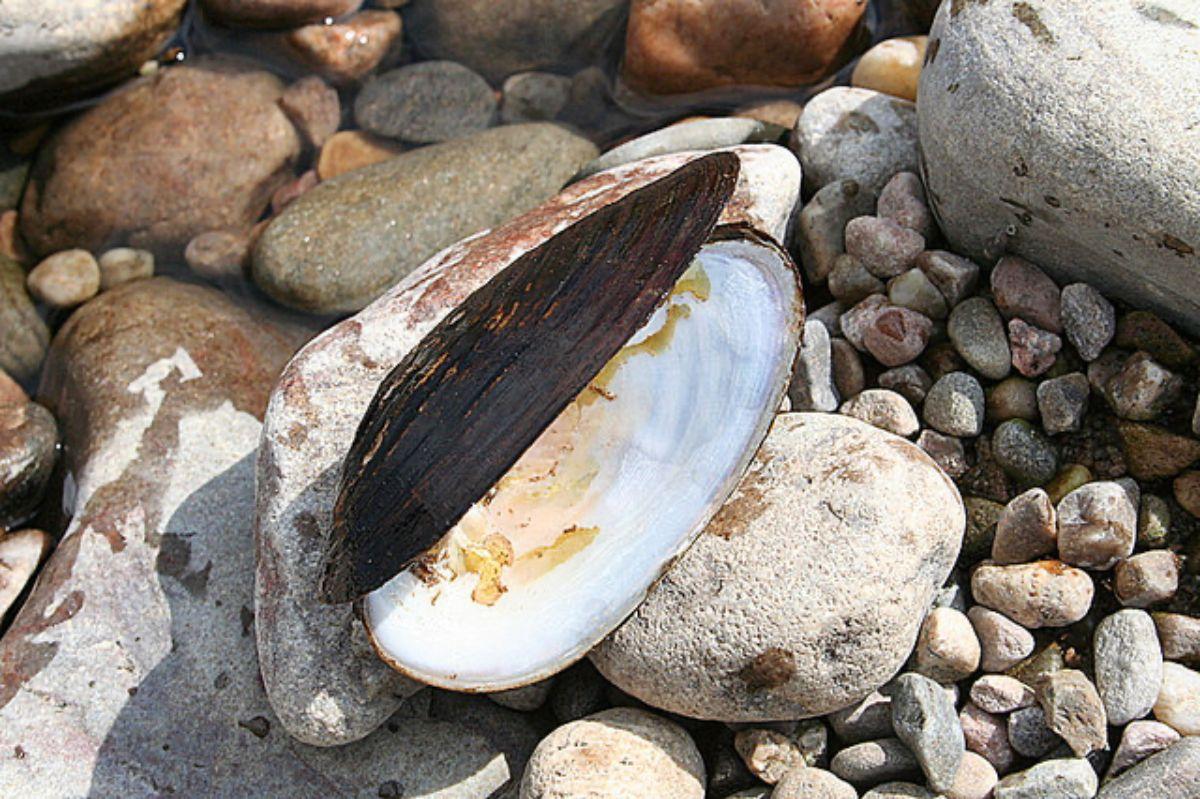

![16 Wild Animals in Saint Lucia [Wildlife in Saint Lucia]](https://www.kevmrc.com/wp-content/uploads/2022/08/16-wild-animals-in-saint-lucia.jpg)
![10 Wild Animals in Monaco [Wildlife in Monaco]](https://www.kevmrc.com/wp-content/uploads/2022/06/10-wild-animals-in-monaco.jpg)
![21 Wild Animals in Western Australia [Wildlife in Western Australia]](https://www.kevmrc.com/wp-content/uploads/2023/01/21-wild-animals-in-western-australia.jpg)